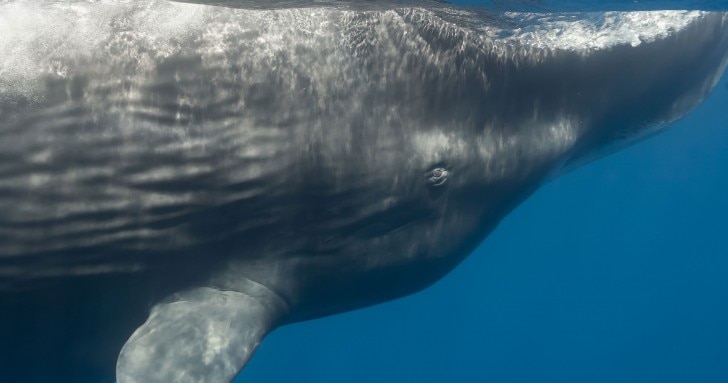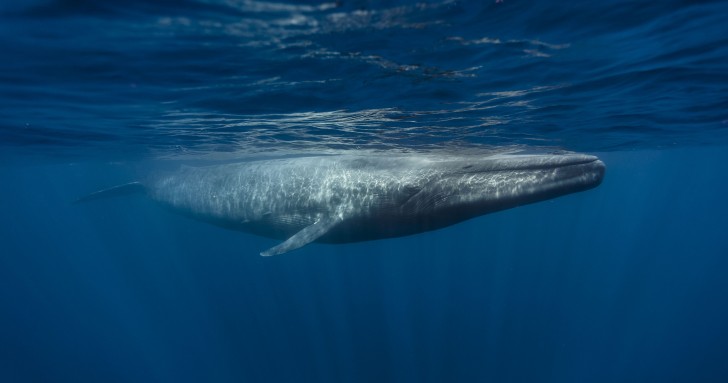BBC Earth newsletter
BBC Earth delivered direct to your inbox
Sign up to receive news, updates and exclusives from BBC Earth and related content from BBC Studios by email.
Blue Planet
The largest creature ever to have lived, with a tongue alone that can weigh as much as an elephant, the blue whale rules the ocean.
Steve Connor explains how this magnificent mammal evolved to such mammoth proportions.
The blue whale is the largest known animal to have ever lived, far bigger than any of the dinosaurs. An adult blue whale can grow to about 30m long and weigh more than 180,000kg, equivalent to around 40 elephants, 30 Tyrannosaurus rex dinosaurs, or about 2,670 average-sized men.
But it started as something far smaller. Like all other whales, the blue whale, Balaenoptera musculus, evolved from a four-legged mammal that lived on land some 48 million years ago and grew just 1.8m long. This common ancestor, called Pakicetus, foraged in streams and some of its descendants became adapted to living in water. This eventually resulted in a completely aquatic creature called Dorudon, which lived 37 million years ago and grew 4.5m long. In Dorudon, we see the beginnings of what makes whales so special. Its nostrils had moved back from its snout to the top of its head. Its forelimbs had become stiff flippers, its trunk was elongated, its hind limbs were virtually non-existent and its tail had evolved into two rubbery flukes, which propelled the animal forward through the water as they were wafted up and down, rather than the side-to-side motion of a fish’s tail.Then something extraordinary began to happen. Because these mammals were floating in the sea, supported by the buoyancy of the salt water, they escaped the limitations of gravity and could become bigger and bigger, with the blue whale out-monstering every other cetacean species. Turn the page for some amazing facts about this extraordinary mammal.
.embed-container { position: relative; padding-bottom: 56.25%; height: 0; overflow: hidden; max-width: 100%; } .embed-container iframe, .embed-container object, .embed-container embed { position: absolute; top: 0; left: 0; width: 100%; height: 100%; }Oxygen is pumped around its enormous body by an equally massive, four-chambered heart. Weighing some 900kg – and the size of a Mini car – the blue whale’s heart beats once every 10 seconds, pumping 220 litres of blood through its body, and beats so loudly it can be heard from 3km away through sonar equipment.
A blue whale’s skin markings are unique, much like fingerprints. The pale bluish-grey colour gives the species its name, although the skin can also look silvery grey or tan, depending on the light. A blue whale has between 80 and 100 long grooves running along the length of its throat and chest.

Blue whales can dive for up to an hour at a time, going to a depth of 100m, so they need highly efficient lungs to survive. Two enormous blowholes, big enough for a small child to crawl into, allow the fast and efficient exchange of oxygen. Blue whales exchange between 80-90% of oxygen in their lungs each time they breathe, compared to just 10-15% in humans.
Blue whales have relatively small eyes for their body size – each about the size of a grapefruit – and their eyesight is thought to be weak. They have no tear glands or eyelashes.
Their gigantic mouths – big enough to house 100 people – can capture enormous quantities of prey with each gulp of water, filtering the nutritious krill from the expelled water with stiff bristles that grow from the roof of the mouth. During the summer months, they eat up to 6,000kg of krill a day.
Despite having no external ears, blue whales are believed to have excellent hearing, using air sinuses and bones to detect sound. They communicate using low-frequency whistles or rumbling noises which can travel hundreds of kilometres and reach 188 decibels – louder than a passenger jet.

Blue whales reach sexual maturity between five and 10 years of age. They seek warmer equatorial waters before embarking on an elaborate mating ritual that involves the male and female rolling over one another, diving in a deep dive, then suddenly swimming to the surface for copulating. The males have the biggest penis in the animal kingdom, about 30cm in diameter when erect and 3m in length.
Blue whales are placental mammals and the foetus develops in the uterus of the mother. The developing foetus grows quickly and after seven months, it is about 3.5m long. The calf is born tail first at 12 months and weighs about 2,700kg, swimming immediately to the surface for air. It suckles on its mother’s two nipples, feeding on up to 180 litres of fat-rich milk a day, allowing it to grow at a daily rate of 90kg. Weaning occurs at around seven or nine months, when the calf is some 15m long.